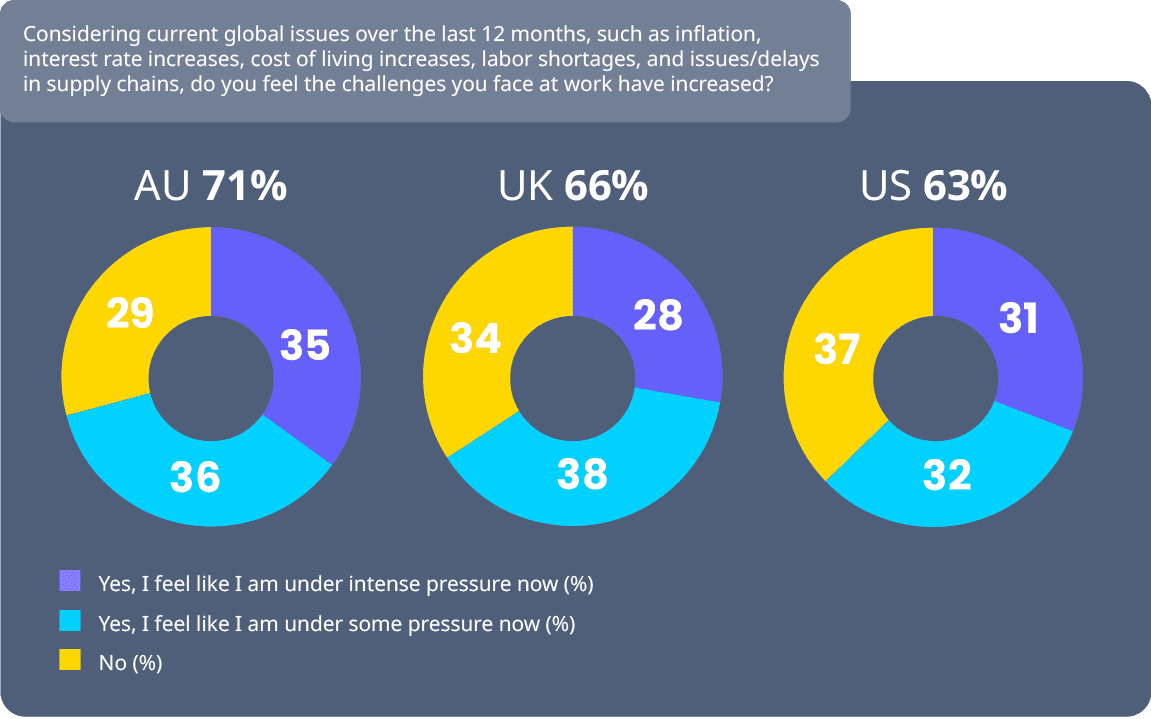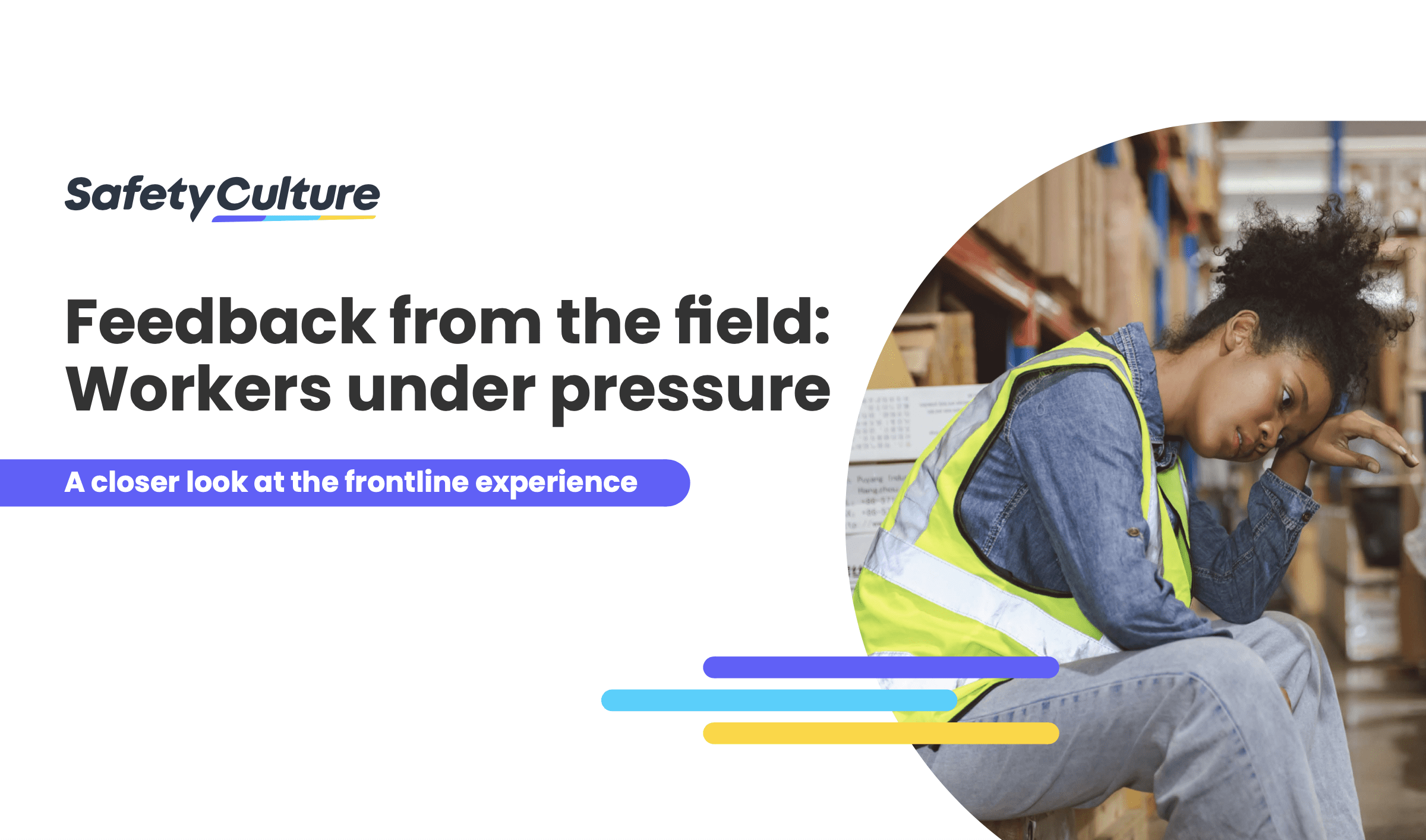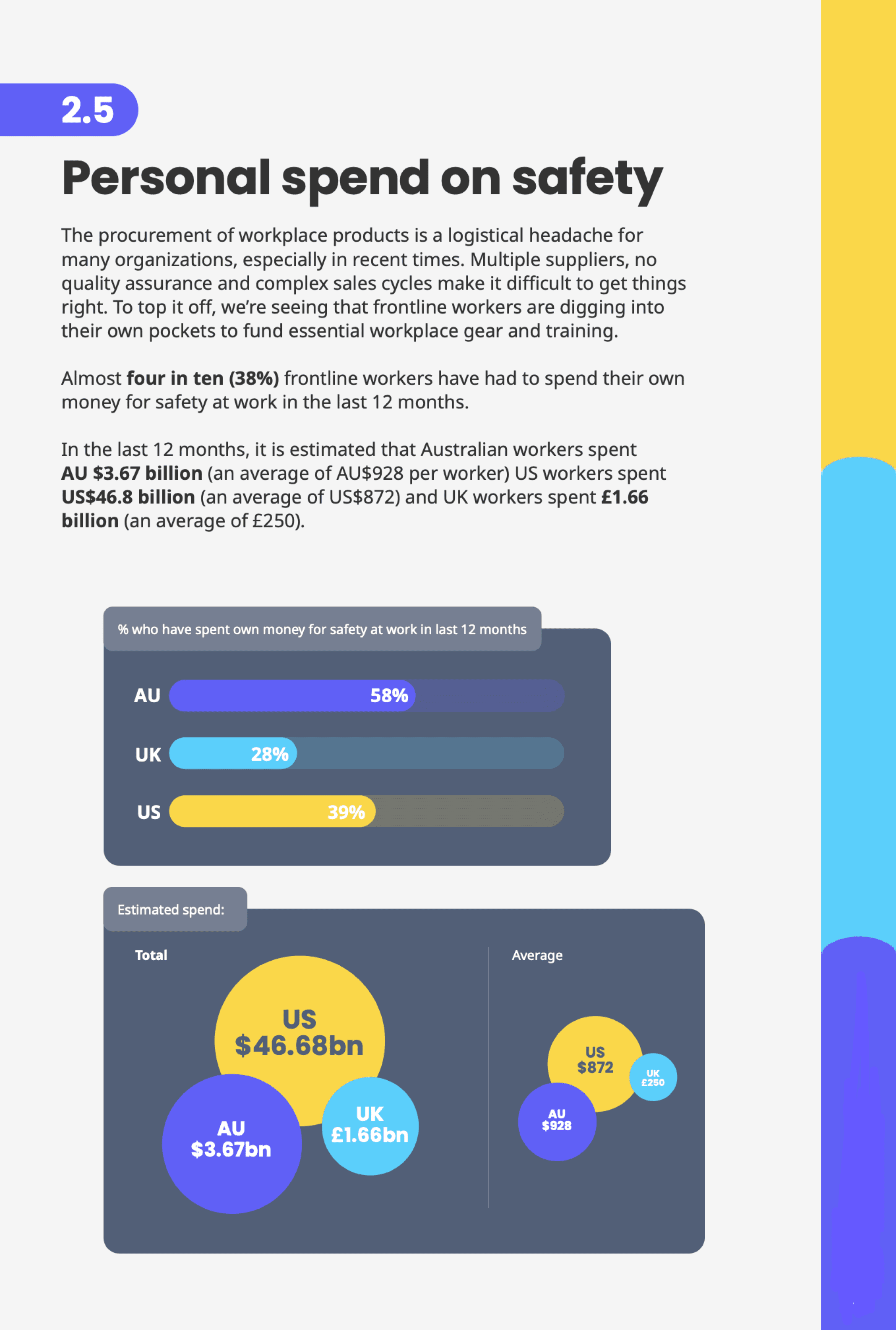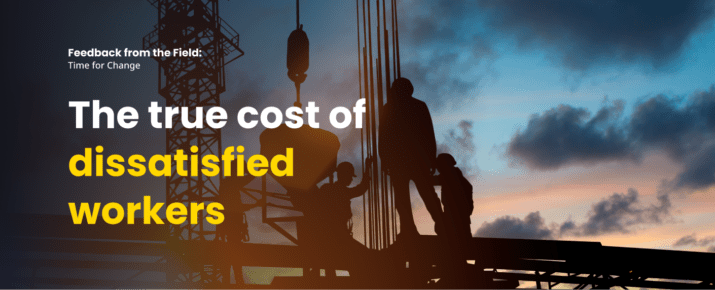Feedback from the field: Frontline workers are paying their own way at work — what can businesses do?
Ask The Experts | Feedback From The Field | By | 23 Oct 2022 | 4 minute read

There’s no doubt that workers — particularly frontline workers — have been forced to do their jobs in a pressure cooker for the past few years.
Continuing labor shortages, supply chain issues, and the soaring cost of living have only turned up the heat, fueling a burnout epidemic as workers try their best to keep shouldering the burden both at home and on the job.
Our own recent survey conducted in partnership with YouGov found that 73% of frontline workers say they’re under increased pressure at home, while 64% say they’re under increased pressure at work. And the news gets even more dire: Not only do frontline workers feel like expectations are exceedingly high, but they also need to scramble to secure their own resources to meet them.

Frontline workers feel undersupplied and unsupported
In the last 12 months, almost four in 10 (38%) of frontline workers say they’ve had to spend their own money on safety at work. The price tag isn’t small, either. Of those that have spent their own money:
- AU workers spent an average of $928 AU
- US workers spent an average of $872 US
- UK workers spent an average of £250

That hefty cost in both their mental wellbeing and actual dollars is taking a toll. 54% of frontline workers say they’d leave frontline work entirely if they had the opportunity to do so.
How can we better meet the needs of the frontline?
At a time when resources are already strapped and staffing is tight, the last thing you want to think about is your workers hitting the road. And, the data shows that employers obviously need to be doing more to support their frontline staff.
But you’re dealing with a lot of similar challenges — supply chain frustrations, skyrocketing costs, tight budgets — yourself.
How can you give your workers the backing and supplies they need without feeling like you’re tapping an empty well? Here are a few ideas.
1. Revisit safety requirements
For starters, take another close look at safety regulations in your area to ensure you’re complying with any mandates that apply to your business. In the US, for example, the Occupational Safety and Health Administration (OSHA) requires employers to pay for personal protective equipment that’s needed to comply with OSHA standards. If you know that your workers are digging into their own pockets for safety, confirm that it’s for supplies that are supplemental or personal preference — and not mandatory for your compliance.
It’s not just a matter of protective gear either — don’t forget to look at digital tooling. It’s time to take stock of the digital systems you have in place. How can you enhance what’s there to streamline processes and ensure safer and better quality outcomes? The right technology can help sharpen our focus, making sure every detail and element of risk is accounted for. There are low-cost mobile-first solutions readily available and you can get started in a matter of hours.
Cumbersome processes that involve paper audit trails and reporting can no longer keep up with the rigorous safety practices required. With a digital checklist, you can centralize records and get instant visibility. This instant gratification also means you can scale your inspection processes credibly and quickly.

2. Seek out employee feedback
When you’ve confirmed that you’re supplying what’s necessary, dig a little deeper to discover why your employees need to use their own paychecks on their safety.
Is there certain equipment or supplies that they value but you were unaware of? If it fits within your budget, start providing those materials for them moving forward. Are there certain things you currently provide that workers don’t see a use for and aren’t mandated? You might be able to reallocate those dollars.
Keep in mind that you might collect a range of feedback. In this pandemic era, workers have an array of comfort levels. One customer service representative might feel like a desk partition and an N95 mask is crucial while another feels perfectly safe without it. You might not be able to meet everybody’s exact demands, but your goal is to collect feedback that helps you get a general pulse on what your staff thinks is missing.
3. Provide a stipend or per diem
“Start providing the supplies and resources your employees are requesting!” is easy advice to give. Yet, cost can be a limiting factor — especially if your budget is already spread thin.
If you don’t have limitless resources to provide what your workers need, consider offering a stipend or per diem that they can use to at least lessen the burden of purchasing some of their own equipment.
It’s not ideal, as workers will likely still need to open their own wallets. But, helping to offset the cost at least demonstrates that you’re invested in their support, success, and safety.
4. Offer mental health support
Safety aside, frontline workers also readily admit that they’re overloaded and overwhelmed — both at work and at home. That’s amplified when you consider that frontline workers are in demanding or even dangerous positions, and sometimes at the receiving end of anger and abuse from customers or other external parties.
Expecting them to grit their teeth and push through it is a recipe for disengagement, burnout, and eventually turnover.
Instead, show workers you’re committed to their mental wellbeing. From evaluating your benefits to ensure they cover mental health services to training managers on mental health awareness and employee check-ins, there are big and small steps you can take to prove to workers that you care about their health and wellness in all areas. Mobile learning is quickly becoming the most accessible way to get training out to those in the field or working remotely.
Workers (and employers) are feeling the pinch
It’s on working teams to get the job done, but it’s our job to equip them with the information and resources they need to do it.
Unfortunately, our recent survey proves that’s easier said than done. Many frontline workers have to dip into their own paychecks to cover their own safety. That’s an issue that employers need to be aware of so that they can find ways to more effectively bridge the gap between what workers need and what the company is able to provide.
Otherwise, employers are staring down an even bigger cost: the loss of their staff.

About the research: All figures, unless otherwise stated, are from YouGov Plc. Total sample size was 1,976 adults (860 US, 558 Australia, 558 UK). Fieldwork was undertaken during August 2022. The survey was carried out online. The figures have been weighted and are representative of US, UK, and AU frontline workers (aged 18+).
Important Notice
The information contained in this article is general in nature and you should consider whether the information is appropriate to your specific needs. Legal and other matters referred to in this article are based on our interpretation of laws existing at the time and should not be relied on in place of professional advice. We are not responsible for the content of any site owned by a third party that may be linked to this article. SafetyCulture disclaims all liability (except for any liability which by law cannot be excluded) for any error, inaccuracy, or omission from the information contained in this article, any site linked to this article, and any loss or damage suffered by any person directly or indirectly through relying on this information.





